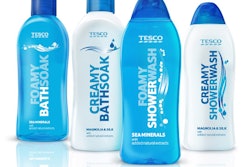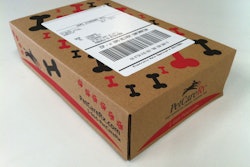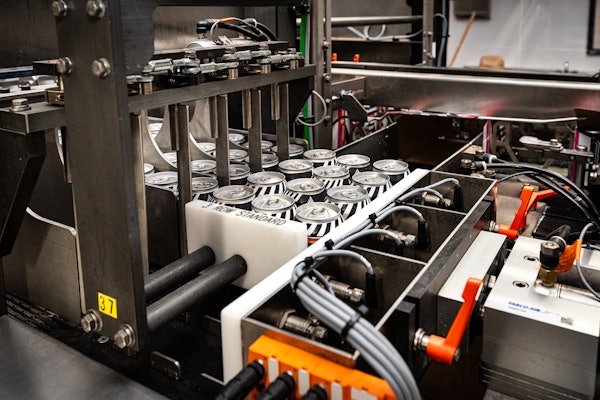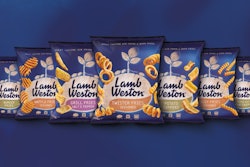Laser systems, which have experienced steady increases in adoption over the past 10 years, are offering a third option in industrial coding applications. Thermal Transfer Overprinting (TTO) has found increasing application with flexible packaging. Each technology has an inherent set of operating considerations. When choosing among them, it is useful to consider the strengths of each technology.
CIJ strengths:
• It adheres to most packaging materials and can be used on curved surfaces, such as the bottom of a soda can.
• It is capable of achieving very high speeds for alphanumeric codes.
• Many small-character CIJ printers are portable and can be moved from line to line as needs arise.
• The latest generation has significantly improved reliability with decreased maintenance requirements.
• Small-character CIJ printers create lot codes, expiration dates, bar codes, and graphics on a wide variety of primary packaging, while large-character CIJ printers do the same for secondary packaging, such as cartons and corrugated boxes.
TIJ strengths:
• Works well on porous and semi-porous materials (e.g., chipboard cartons with an uncoated printing area). The high resolution (typically 300 dpi or above) makes it an excellent choice when visual appearance of a bar code is important or when used with a camera-based code verification system.
• Maintenance is simplified because the print head and ink are contained in a low-cost, disposable cartridge. In the last few years, significant improvements to ink-jet printers make them cleaner and easier to use, regardless of which technology is being employed.
• TIJ printers enable high-speed coding of serialized data and many types of bar codes, including GS1 DataMatrix, to be compatible with track-and-trace applications.
• Advancements in print-head technology include automated cleaning and a perforated design that reduces ink and debris build-up across the face of the print head.
• TIJ printers are inherently clean and easy to use due to their replaceable cartridge design. As inks become available that are darker and deliver better dry times, and printer vendors offer more rugged industrial designs, TIJ technology is experiencing increased adoption.
Laser strengths:
• While requiring a higher initial investment, lasers offer high reliability with minimal maintenance and good print quality. These factors will continue to drive an increased usage of lasers in industrial coding applications.
• It can be used for marking numerical codes, 2D-matrix and bar codes, logos, and symbols onto labels, sleeves, glass and plastic bottles, cans, kegs, tubes, blisters, cardboards, tubular films, and caps.
• The advantages of laser coding include speed, versatility, code permanence, noncontact operation, clean and dry process, maintenance-free operation over thousands of hours, extremely low operating costs, and adaptability to a fully automated line.
• Lasers also offer high reliability in “no-code/ no-run” operations. This means that if it’s mandatory to code the product prior to distribution, then production will stop if a product is coded incorrectly. Laser coding vendors are often asked about the difference between laser ablation and laser color change. In most cases, the substrate will determine if you need to choose between laser ablation and color change. Most of the applications of a CO2 laser are laser ablation, where the top color is removed, and the color underneath shows through. There are some limited substrates that actually change color when marked with a CO2 laser, with polyvinyl chloride being the most common. CO2 lasers are often “engraving” what they mark, which can slightly alter the color, as seen with PET bottles. When marking PET bottles with a CO2 laser, the mark turns slightly opaque, which allows it to stand out more. That is, the color does not change, but the material reacts to the laser to cause this effect. YAG lasers perform a color change on most plastics, which is caused by the effect of the 1064-nm wavelength of the YAG laser on the material to be marked. The best way to determine the optimum laser technology for your application is to provide samples to your sales representative, who will advise you of your options.
TTO strengths:
• TTO features a thermal transfer print head and ribbon that makes contact with a flexible substrate, such as synthetic films and plastic labels. Miniature print elements under a glass coating heat small areas of the ribbon and transfer ink to the target substrate.
• Print elements are program-controlled to create real-time images, including clean, high-resolution bar codes, text, and graphics.
• TTO systems can address applications in both continuous (moving) and intermittent (stop-print-start) environments.
• Typical applications for TTO are within the snack, bakery, meats, and frozen food industries, where flexible packaging is common. Such packaging also plays a big part in the retail hardware sector, where items like screws, nails, and fittings for do-it-yourself projects are sold prepacked.
Ultimately, when deciding on a coding technology, the strengths of each must be matched with how well it will integrate with other equipment on the line. It is critical to match the production line communications with printer capabilities, as well as ensure that the printer has the ability to process the information and print at the speeds necessary to meet production demands.
Liked this article? Download the entire playbook here.























